-
ARTÍCULO ORIGINAL21/10/2022
“EMPODEREENF”: construction of an application for nurses’ continuing education on psychological violence against women
Revista Brasileira de Enfermagem. 2022;75(5):e20200391
Resumen
ARTÍCULO ORIGINAL“EMPODEREENF”: construction of an application for nurses’ continuing education on psychological violence against women
Revista Brasileira de Enfermagem. 2022;75(5):e20200391
DOI 10.1590/0034-7167-2020-0391
Visualizações0Ver maisABSTRACT
Objective:
to construct a prototype of a mobile application on psychological violence against women to facilitate nurses’ continuing education.
Method:
an applied methodological research of technological development, based on the Contextualized Instructional Design method.
Results:
the prototype content was based on the learning objectives developed through a narrative review, which guided an integrative review to compile the information. The prototype is called “EmpodereEnf”, and is composed of an initial screen, bringing nurses as a target audience, and, soon after, offering nine general moblets for access to information such as: concepts, causes, manifestations and consequences of psychological violence; means for identification and approach in nursing consultation and health education; compulsory notification and referral; examples of cases of psychological violence and references.
Final considerations:
the prototype is a possibility for future coping interventions and a work tool for nurses in the face of psychological violence against women.

-
ARTÍCULO ORIGINAL21/10/2022
Management in the Family Health Strategy: workloads and structured institutional violence
Revista Brasileira de Enfermagem. 2022;75(3):e20220071
Resumen
ARTÍCULO ORIGINALManagement in the Family Health Strategy: workloads and structured institutional violence
Revista Brasileira de Enfermagem. 2022;75(3):e20220071
DOI 10.1590/0034-7167-2022-0071
Visualizações0Ver maisABSTRACT
Objectives:
to understand the relationship between workloads and institutional violence in Family Health Strategy managers’ practice.
Methods:
qualitative research using theoretical triangulation and data from semi-structured interviews. Participants were 35 managers of Basic Health Units in the five Regions of Brazil, who worked in the Family Health Strategy. We used thematic analysis and ATLAS.ti for data analysis.
Results:
workloads were analyzed, showing relationships with institutional violence. Thematic categories emerged: “related to the management work itself”; “related to other instances of health system management”; “related to users and community”. There was an interrelationship between increased managers’ workloads and institutional violence.
Final Considerations:
the Family Health Strategy is relevant for universal access to health and requires favorable institutional conditions for its effectiveness. Adverse scenarios lead to increased workloads, approaching institutional violence.
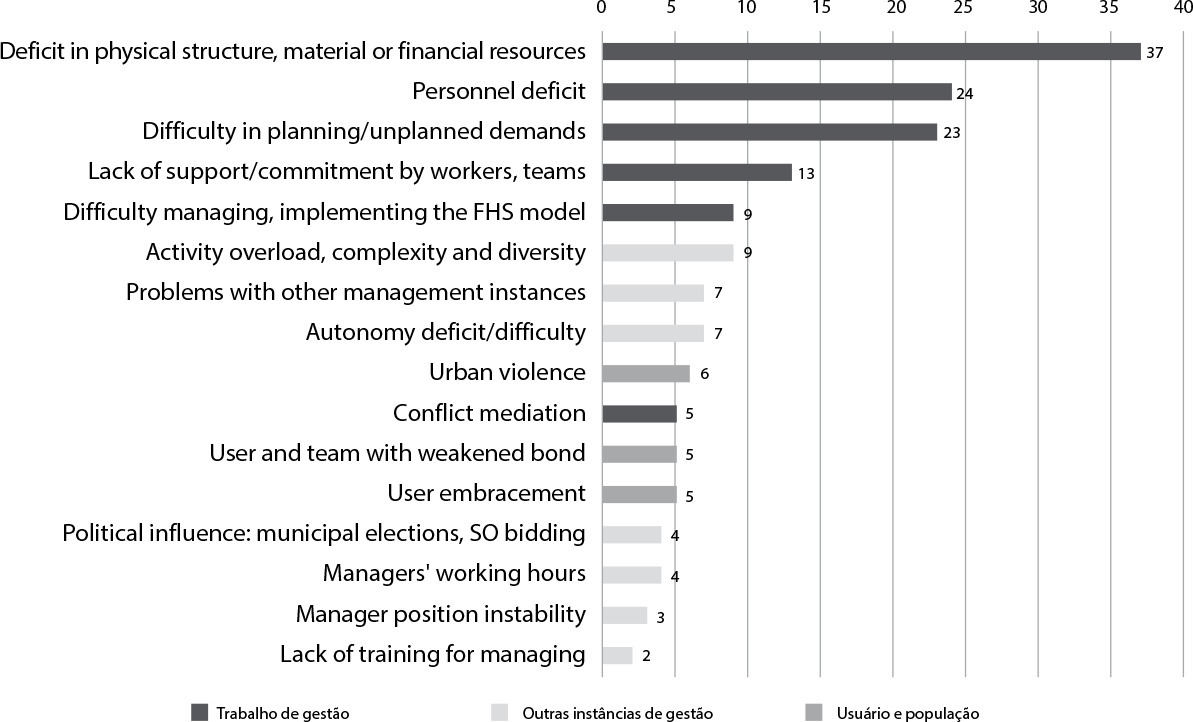
-
ARTÍCULO ORIGINAL21/10/2022
Self-care deficit among older men in the COVID-19 pandemic: implications for nursing
Revista Brasileira de Enfermagem. 2022;75:e20210933
Resumen
ARTÍCULO ORIGINALSelf-care deficit among older men in the COVID-19 pandemic: implications for nursing
Revista Brasileira de Enfermagem. 2022;75:e20210933
DOI 10.1590/0034-7167-2021-0933
Visualizações0Ver maisABSTRACT
Objectives:
to analyze self-care deficit among older men in the COVID-19 pandemic in Brazil and to discuss the implications for nursing practice.
Methods:
web survey, multicentric, qualitative. A total of 120 older men participated, applying a form from April to June 2020 and April to August 2021. Reflective Thematic Analysis, interpreted by Orem’s Self-Care Deficit Theory, was used.
Results:
temporally, the self-care of older men was manifested in the self-care requirements – affective bonds, self-care for development – meditation and self-care with health deviations – remote consultations. Fully, partially compensatory, educational/support systems mobilized self-care.
Final Considerations:
as care managers, nurses can strengthen the support network for older men by activating professionals from the multidisciplinary team, family members, caregivers and the community to promote self-care and correct health deviations in times of crisis.

-
ARTÍCULO ORIGINAL21/10/2022
Circle dance: integrative and complementary practice in the daily health promotion for older adults
Revista Brasileira de Enfermagem. 2022;75:e20210003
Resumen
ARTÍCULO ORIGINALCircle dance: integrative and complementary practice in the daily health promotion for older adults
Revista Brasileira de Enfermagem. 2022;75:e20210003
DOI 10.1590/0034-7167-2021-0003
Visualizações0Ver maisABSTRACT
Objectives:
to understand circle dance as an integrative and complementary practice for health promotion in older adults’ daily lives.
Methods:
an interpretive, qualitative study, based on Michel Maffesoli’s Comprehensive Sociology of Everyday Life. There were 20 participants, 17 older adults and three focalizers in circles held in Basic Health Units in a municipality in southern Brazil. Data were collected through interviews and observation, between September 2016 and March 2017, and analyzed through preliminary analysis, ordering, key links, coding and categorization.
Results:
three categories emerged that express the daily life of circle dance with older adults: circles that spin; challenges for new circles to spin; entering, being and staying in the circle.
Final Considerations:
circle dance provided older adults with a feeling of belonging to a group, combined with pleasure and well-being, contributing to promotion of older adults’ health.
-
ARTÍCULO ORIGINAL18/10/2022
Knowledge about antineoplastic drugs: implications for the health of nursing workers in a general hospital
Revista Brasileira de Enfermagem. 2022;75(3):e20210025
Resumen
ARTÍCULO ORIGINALKnowledge about antineoplastic drugs: implications for the health of nursing workers in a general hospital
Revista Brasileira de Enfermagem. 2022;75(3):e20210025
DOI 10.1590/0034-7167-2021-0025
Visualizações0Ver maisABSTRACT
Objectives:
to understand, from a worker’s health perspective, the knowledge of nursing professionals about the use of antineoplastic drugs in a general hospital.
Methods:
a descriptive and exploratory study with a qualitative approach. It was conducted at a university hospital, between April and August 2018, with 35 nursing professionals who responded to a semi-structured interview. Thematic analysis was used for data treatment.
Results:
from the data, three thematic categories emerged, related to the nursing professionals’ knowledge about antineoplastic drugs and their effects on workers’ health; situations in which exposure to these drugs occurs; and protection mechanisms for the patient, the environment, and the worker.
Final Considerations:
the nursing professionals had little knowledge about antineoplastic drugs. The practices related to handling and the necessary protective measures to deal with these drugs were empirically determined and relatively subsidized the knowledge acquired by the professionals.
-
ARTÍCULO ORIGINAL18/10/2022
Opinions of healthcare students on organ and tissue donation for transplantation
Revista Brasileira de Enfermagem. 2022;75(3):e20210001
Resumen
ARTÍCULO ORIGINALOpinions of healthcare students on organ and tissue donation for transplantation
Revista Brasileira de Enfermagem. 2022;75(3):e20210001
DOI 10.1590/0034-7167-2021-0001
Visualizações0Ver maisABSTRACT
Objectives:
to analyze the opinions of healthcare students on organ and tissue donation for transplantation.
Methods:
qualitative document analysis study, using the records of a database and analyzing data from two perspectives: 1) Lexical analysis, with the IRAMUTEQ software, and 2) Thematic content analysis.
Results:
from the analysis, 3 main categories were generated: 1) Organ and tissue donation as an act of love for others and an opportunity of a new beginning; 2) Clarification and awareness on organ and tissue donation; and 3) Importance of communicating the family and promoting organ and tissue donation.
Final Considerations:
despite being in favor of donation, students also recognize the presence of social taboos; the discussion in the family nucleus, promoting the theme and raising awareness in society are considered important. Additionally, the education of students is one of the possibilities of intervention for the issue.
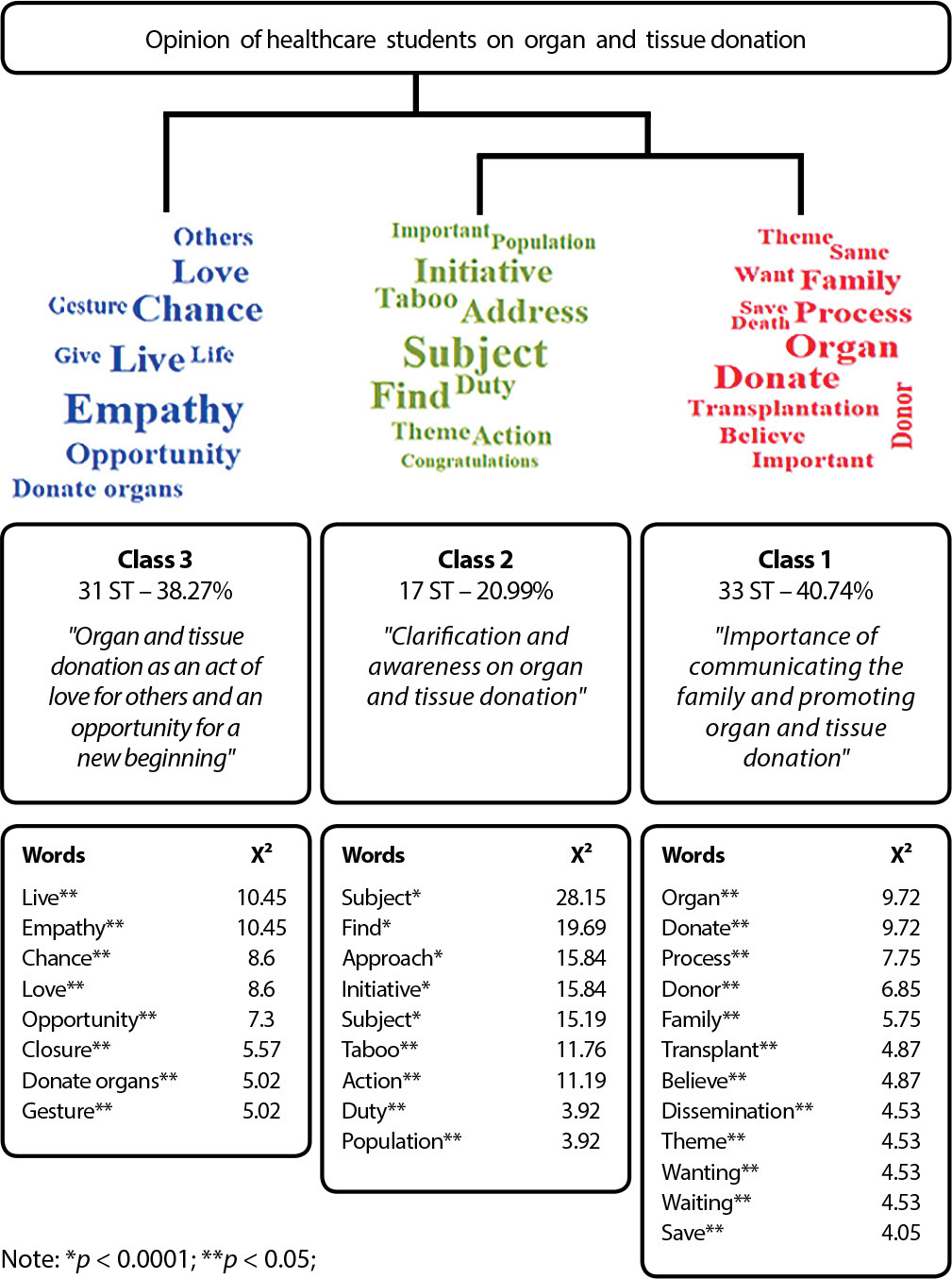
-
ARTÍCULO ORIGINAL18/10/2022
Being ethical and bioethical in daily life of primary health care: nurses’ perceptions
Revista Brasileira de Enfermagem. 2022;75(3):e20210093
Resumen
ARTÍCULO ORIGINALBeing ethical and bioethical in daily life of primary health care: nurses’ perceptions
Revista Brasileira de Enfermagem. 2022;75(3):e20210093
DOI 10.1590/0034-7167-2021-0093
Visualizações0Ver maisABSTRACT
Objectives:
to understand the perceptions of ethics and bioethics and how to be ethical and bioethical in daily life of Primary Health Care, from the perspective of nurses.
Methods:
this is a Holistic-qualitative Multiple Case Study, based on Comprehensive Everyday Sociology, with 54 participants.
Results:
two subcategories and the category Being ethical and bioethical in daily life of PHC: nurses’ perceptions emerged. The ethical and bioethical being permeates a subjective and abstract self, whose fears, anxieties and concerns are intertwined with the human and professional dimensions in daily work and in personal-professional relationship. Ethics and bioethics perceptions emerge from subjectivity, established relationships, lived experiences and daily actions of nurses essential to the profession, professionals and individuals to be cared for.
Final Considerations:
ethical and bioethical perceptions and attitudes are essential to care, management and organizational actions, health care, and the safety of users and professionals.
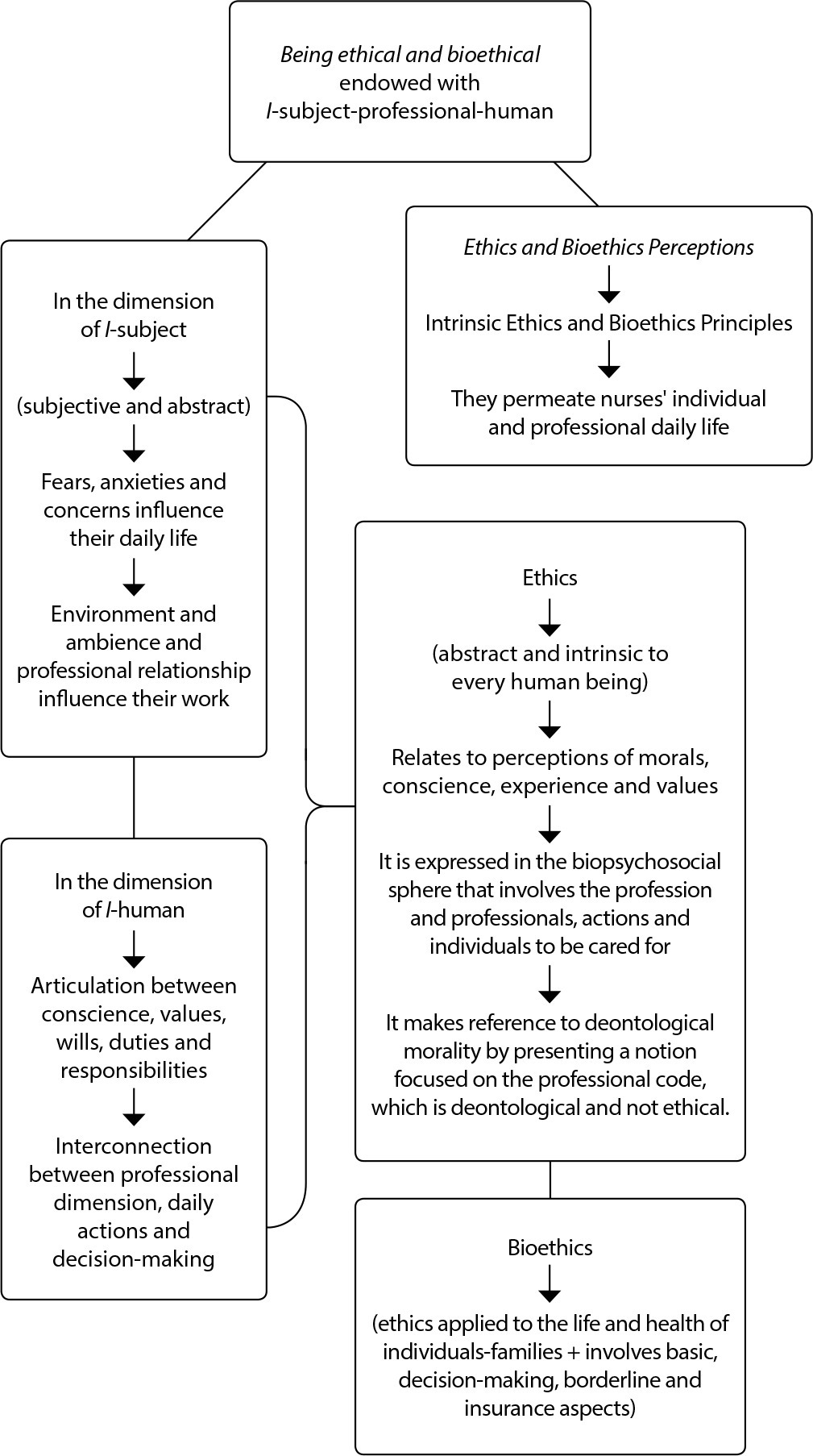
-
ARTÍCULO ORIGINAL18/10/2022
Breast cancer screening program for risk groups: facts and perspectives
Revista Brasileira de Enfermagem. 2022;75(3):e20210050
Resumen
ARTÍCULO ORIGINALBreast cancer screening program for risk groups: facts and perspectives
Revista Brasileira de Enfermagem. 2022;75(3):e20210050
DOI 10.1590/0034-7167-2021-0050
Visualizações0Ver maisABSTRACT
Objectives:
to measure the frequency and compliance of breast cancer screening, according to the risk for this disease.
Methods:
a cross-sectional study with 950 female users of 38 public Primary Health Care services in São Paulo, between October and December 2013. According to UHS criteria, participants were grouped into high risk and standard risk, and frequency, association (p≤0.05), and screening compliance were measured.
Results:
6.7% had high risk and 93.3% standard risk, respectively; in these groups, the frequency and compliance of clinical breast examination were 40.3% and 37.1%, and 43.5% and 43.0% (frequency p=0.631, compliance p=0.290). Mammograms were 67.7% and 35.5% for participants at high risk, and 57.4% and 25.4% for those at standard risk (frequency p=0.090, compliance p=0.000).
Conclusions:
in the groups, attendance and conformity of the clinical breast exam were similar; for mammography, it was higher in those at high risk, with assertiveness lower than the 70% set in UHS.
-
ARTÍCULO ORIGINAL04/12/2020
Lesão por pressão relacionada ao uso de equipamentos de proteção individual na pandemia da COVID-19
Revista Brasileira de Enfermagem. 2020;73:e20200670
Resumen
ARTÍCULO ORIGINALLesão por pressão relacionada ao uso de equipamentos de proteção individual na pandemia da COVID-19
Revista Brasileira de Enfermagem. 2020;73:e20200670
DOI 10.1590/0034-7167-2020-0670
Visualizações0RESUMO
Objetivo:
Descrever prevalência e fatores associados da lesão por pressão relacionada ao uso de equipamentos de proteção individual durante a pandemia da COVID-19.
Métodos:
Estudo transversal realizado por meio de instrumento disponibilizado em redes sociais com 1.106 profissionais de saúde. Os dados foram analisados por meio de estatística descritiva e comparada, considerando valor de p < 0,05.
Resultados:
Houve prevalência de 69,4% para lesão por pressão relacionada ao uso do equipamento de proteção individual, com uma média de 2,4 lesões por profissional. Os fatores significativos foram: menores de 35 anos de idade, trabalhar e fazer uso de equipamentos de proteção individual por mais de seis horas no dia, em unidades hospitalares e sem o uso de insumos para proteção.
Conclusão:
A lesão por pressão relacionada ao uso de dispositivos médicos apresentou alta prevalência nessa população. O reconhecimento da lesão nesses profissionais possibilita avançar em estratégias de prevenção.
Palavras-chave: CoronavírusEquipamento de Proteção IndividualLesão por PressãoPandemiasPessoal de SaúdeVer mais -
ARTÍCULO ORIGINAL13/07/2020
Dermatite associada à incontinência em idosos: prevalência e fatores de risco
Revista Brasileira de Enfermagem. 2020;73:e20180475
Resumen
ARTÍCULO ORIGINALDermatite associada à incontinência em idosos: prevalência e fatores de risco
Revista Brasileira de Enfermagem. 2020;73:e20180475
DOI 10.1590/0034-7167-2018-0475
Visualizações0Ver maisRESUMO
Objetivo:
Determinar prevalência e fatores de risco para dermatite associada à incontinência em idosos.
Método:
Estudo transversal exploratório realizado em hospitais públicos. Obtevese prevalência da dermatite e associações pelo cálculo da razão. A dimensão do efeito foi estimada pela razão de chances com intervalo de confiança de 95% e significância estatística p < 0,05.
Resultados:
Incluíram-se 138 idosos, média de idade 77,2 anos (± 9,3); 69 (50%) com incontinência fecal e urinária combinadas. A prevalência de dermatite foi 36,2% (50); 28% (14) apresentavam lesão por pressão; 14% (7), candidose. Foram fatores de risco: maior tempo de internação (Odds Ratio = 5,8 [2,6-12,9]), obesidade (Odds Ratio = 3,6 [1,2-10,4]), alto nível de dependência (Odds Ratio = 2,4 [1,1-5,0]) e alto risco para lesão por pressão (Odds Ratio = 6,1 [1,4-26,9]).
Conclusão:
Houve alta prevalência de dermatite associada à incontinência. O reconhecimento precoce dos fatores de risco favorece ações preventivas efetivas.
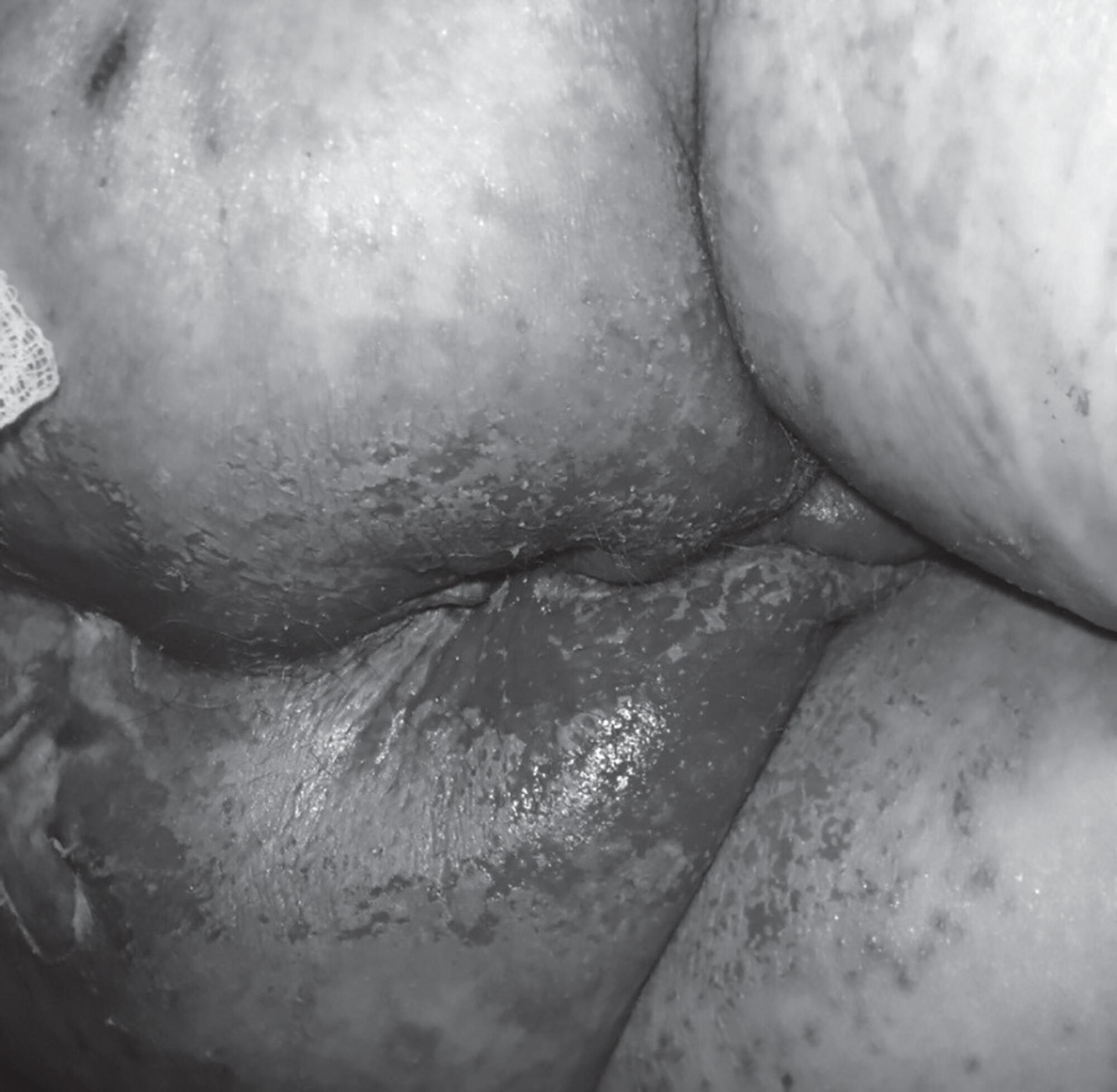
-
ARTÍCULO ORIGINAL21/10/2019
Nursing care systematization: perceptions and knowledge of the Brazilian nursing
Revista Brasileira de Enfermagem. 2019;72(6):1547-1553
Resumen
ARTÍCULO ORIGINALNursing care systematization: perceptions and knowledge of the Brazilian nursing
Revista Brasileira de Enfermagem. 2019;72(6):1547-1553
DOI 10.1590/0034-7167-2018-0606
Visualizações0Ver maisABSTRACT
Objective:
to present the perception and knowledge of Brazilian nursing nurses and academics regarding Nursing Care Systematization.
Method:
a descriptive study, carried out in the first half of 2018.
Results:
of the 596 respondents, 86% perceived Nursing Care Systematization as very important, but only 60.9% used it in their care practice. Its use was statistically associated with a higher level of training. Non-utilization was associated with the perception that it is irrelevant and with little knowledge on the Nursing Process, even in the face of recognition of its obligation. Among professionals who wish to learn more about the subject, understanding the application of the process, especially the planning step, is perceived as a necessity.
Conclusion:
the relevance perception of systematization and levels of knowledge of the professional/academic are directly related to the use or not of Nursing Care Systematization principles.

-
ARTÍCULO DE REVISIÓN05/12/2019
Vulnerability of the elderly: a conceptual analysis
Revista Brasileira de Enfermagem. 2019;72:337-344
Resumen
ARTÍCULO DE REVISIÓNVulnerability of the elderly: a conceptual analysis
Revista Brasileira de Enfermagem. 2019;72:337-344
DOI 10.1590/0034-7167-2018-0728
Visualizações0Ver maisABSTRACT
Objective:
To analyze the concept of vulnerability of the elderly.
Method:
A concept analysis, according to the method proposed by Walker and Avant, operationalized through integrative review through search in scientific data portals using the
Descriptors:
Health vulnerability, aged, health services for the aged, health of the elderly, vulnerable populations and geriatric health services. To compose the literary corpus, 36 studies were selected.
Results:
Concept antecedents, as well as its attributes, were identified in individual, social and programmatic characteristics, which make up the characteristics of “vulnerability of the elderly”, besides consequences of the phenomenon. These characteristics were analyzed with emphasis on aspects that contribute to the process of vulnerability of the elderly.
Conclusion:
The study demonstrated the multidimensionality of the phenomena studied, highlighting the peculiarities of vulnerability during aging. However, there is a need for further studies on the construct.
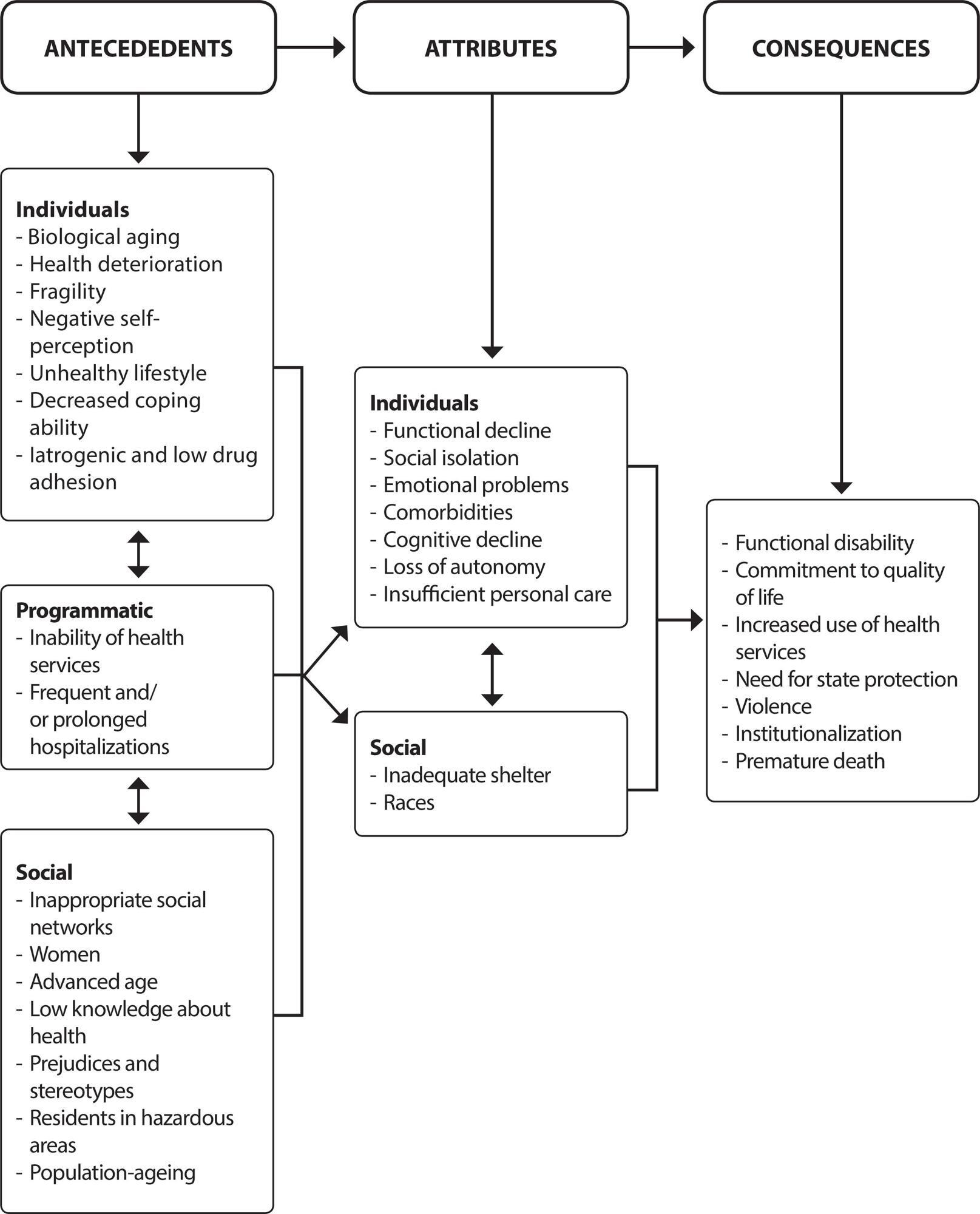
-
ARTÍCULO ORIGINAL21/10/2019
Workloads and burnout of nursing workers
Revista Brasileira de Enfermagem. 2019;72(6):1435-1441
Resumen
ARTÍCULO ORIGINALWorkloads and burnout of nursing workers
Revista Brasileira de Enfermagem. 2019;72(6):1435-1441
DOI 10.1590/0034-7167-2017-0659
Visualizações0Ver maisABSTRACT
Objective:
to identify workloads in nursing work and its association with nursing worker burnout.
Method:
a cross-sectional study, including 211 nursing workers from a university hospital, between July and August 2016. For the analysis, the descriptive statistics, Chi-Square Test, Fisher’s Exact Test and Mann Whitney U-Test were used.
Results:
the most evidenced loads were biological. A significant association was found between workloads and workers’ occupation, as well as a significant association between workloads and worker burnout. Burnout caused upper limb pain, neck and lumbar pain, lower limb pain, muscle spasm, lower limb edema, mental fatigue, headache, nervousness, and forgetfulness.
Conclusion:
workloads identification is a subsidy for the promotion of interventions that minimize the burnout generated to the health of the nursing worker.
-
19/08/2019
La intervención humor en la interacción enfermero-paciente
Revista Brasileira de Enfermagem. 2019;72(4):1078-1085
Resumen
La intervención humor en la interacción enfermero-paciente
Revista Brasileira de Enfermagem. 2019;72(4):1078-1085
DOI 10.1590/0034-7167-2018-0609
Visualizações0RESUMEN
Objetivo:
Describir los factores que influencian el uso del humor en el cuidado de enfermería, su aplicabilidad y beneficios.
Método:
Revisión de alcance según la metodología de Arksey y O’Mally. Se investigaron artículos publicados entre 2008 y 2018, en las plataformas EBSCO Host, Biblioteca Virtual en Salud y Google Académico.
Resultados:
Se han identificado 465 artículos e incluidos 17 de ellos. Se encontró información sobre la definición de humor; su aplicabilidad como intervención de enfermería; el humor como herramienta para mejorar la comunicación y la relación entre el enfermero y el paciente; factores de influencia; el tipo de intervenciones de humor; beneficios del humor en la atención de salud y; las limitaciones y precauciones de intervención del humor.
Conclusión:
El humor promueve la comunicación, las relaciones y el bienestar; ayuda a manejar situaciones difíciles y desagradables, reduce la tensión, la incomodidad y el estrés; y fortalecer el sistema inmunológico. Esta intervención debe usarse con precaución.
Palavras-chave: ComunicaciónEnfermeríaEvaluación del Resultado de la Atención al PacienteIngenio y Humor como AsuntoRelaciones Enfermera-PacienteVer mais -
29/01/2021
Violência doméstica contra a mulher na pandemia: estratégias de enfrentamento divulgadas pelas mídias digitais
Revista Brasileira de Enfermagem. 2021;74:e20200631
Resumen
Violência doméstica contra a mulher na pandemia: estratégias de enfrentamento divulgadas pelas mídias digitais
Revista Brasileira de Enfermagem. 2021;74:e20200631
DOI 10.1590/0034-7167-2020-0631
Visualizações0RESUMO
Objetivo:
conhecer as estratégias de enfrentamento da violência doméstica contra a mulher divulgadas pelas mídias digitais no início da pandemia de COVID-19.
Métodos:
estudo documental de abordagem qualitativa. A busca aconteceu de 11 de março a 30 de abril de 2020, em quatro fontes: jornais e portais online, rede social, páginas oficiais governamentais e portais do terceiro setor. Realizou-se análise de conteúdo temática dos achados.
Resultados:
foram identificadas 77 estratégias na imprensa jornalística, 93 na rede social, 45 nos portais governamentais e 40 nas organizações do terceiro setor. Da análise, emergiram três categorias empíricas: Estratégias para comunicação com as mulheres; Estratégias adotadas pelos serviços de atendimento; Estratégias para informar a população.
Considerações finais:
a maior parte das estratégias foram adaptações de serviços já existentes, centradas na denúncia da violência pelas mulheres.
Palavras-chave: Estratégias NacionaisMeios de ComunicaçãoPandemiasViolência Contra a MulherViolência DomésticaVer mais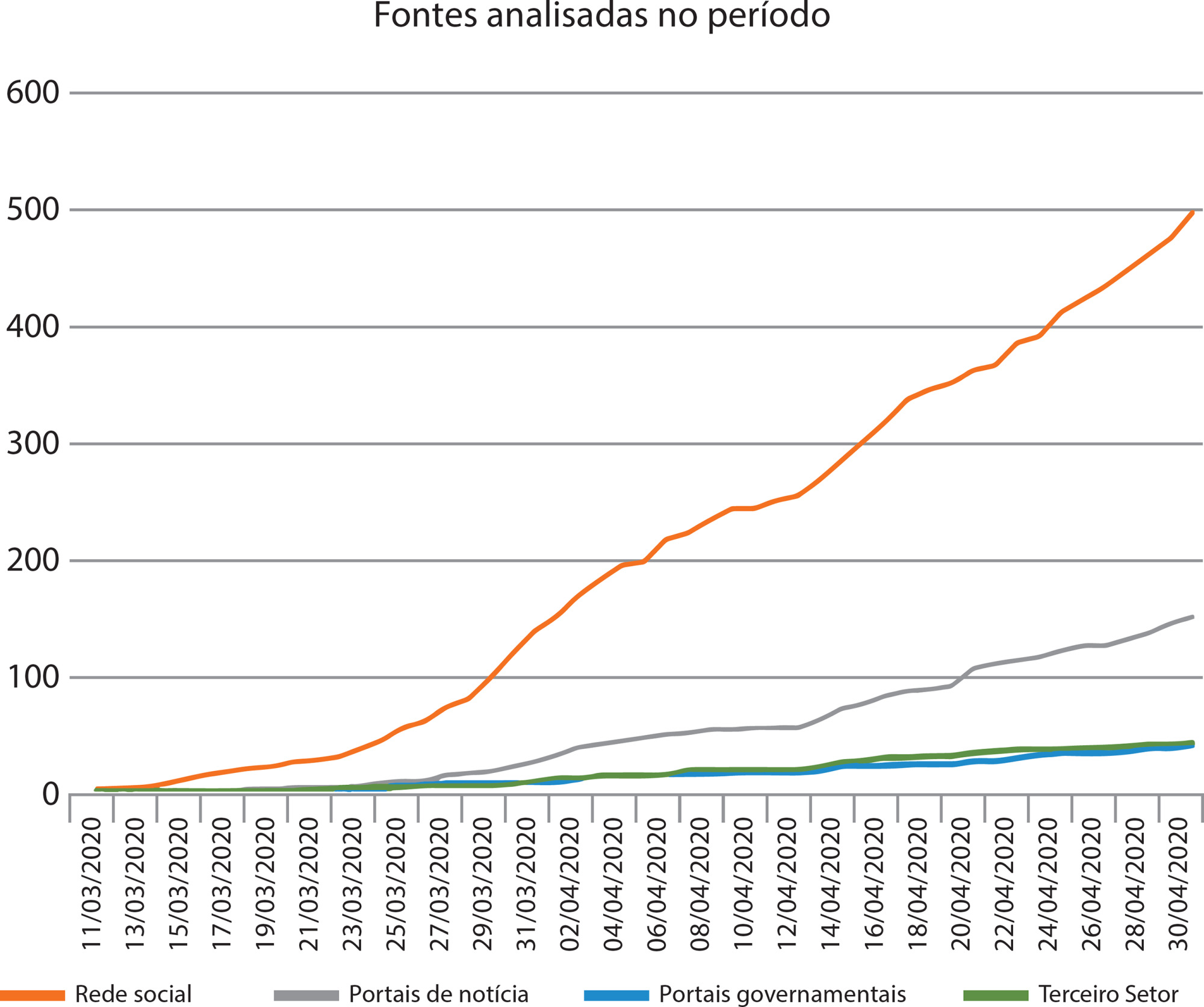
-
20/01/2021
Burnout Syndrome and Associated Factors in Intensive Care Unit Nurses
Revista Brasileira de Enfermagem. 2021;74:e20190535
Resumen
Burnout Syndrome and Associated Factors in Intensive Care Unit Nurses
Revista Brasileira de Enfermagem. 2021;74:e20190535
DOI 10.1590/0034-7167-2019-0535
Visualizações0Ver maisABSTRACT
Objective:
to estimate prevalence and factors associated with Burnout Syndrome in intensive care nurses in a city in the state of Bahia.
Methods:
a cross-sectional, population-based study carried out with 65 intensive care nurses through a self-administered questionnaire, from July to November 2016, containing sociodemographic data, lifestyle, work characteristics. To define burnout syndrome, the Maslach Burnout Inventory was used.
Results:
Burnout Syndrome prevalence was 53.6%, an association was observed with age, tobacco consumption, alcohol use, weekly night shift hours, employment relationship, having an intensive care specialist title, number of patients on duty, monthly income and considering active or high-strain job.
Conclusion:
the results of this study can contribute to expanding the discussion on stressful working conditions in Intensive Care Units.
Búsqueda
Buscar en:
Nuvem de Tags
Adolescente (85) Atenção Primária à Saúde (239) COVID-19 (91) Criança (91) Cuidados de Enfermagem (269) Educação em Enfermagem (151) Educação em Saúde (139) Enfermagem (930) Enfermagem Pediátrica (86) Estudantes de Enfermagem (77) Estudos de Validação (131) Família (87) Idoso (208) Promoção da Saúde (99) Qualidade de Vida (104) Saúde do Trabalhador (86) Saúde Mental (145) Saúde Pública (82) Segurança do Paciente (150) Tecnologia Educacional (100)



